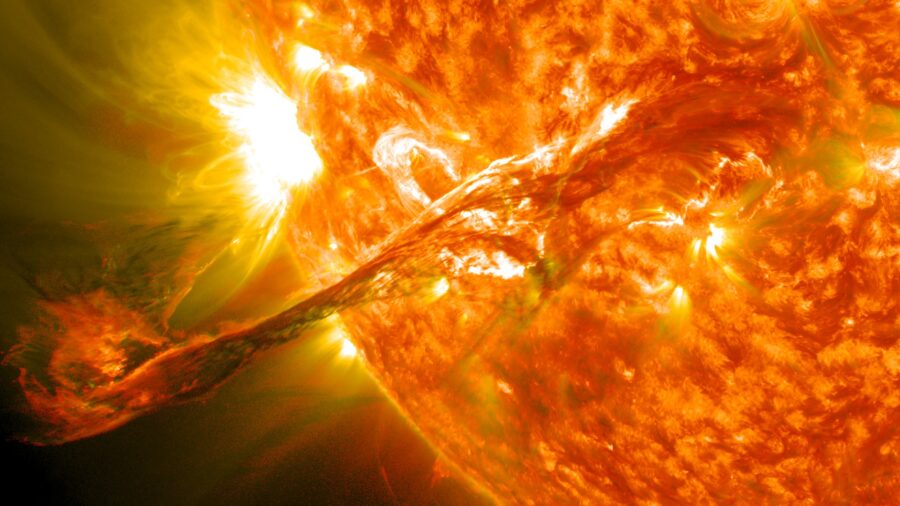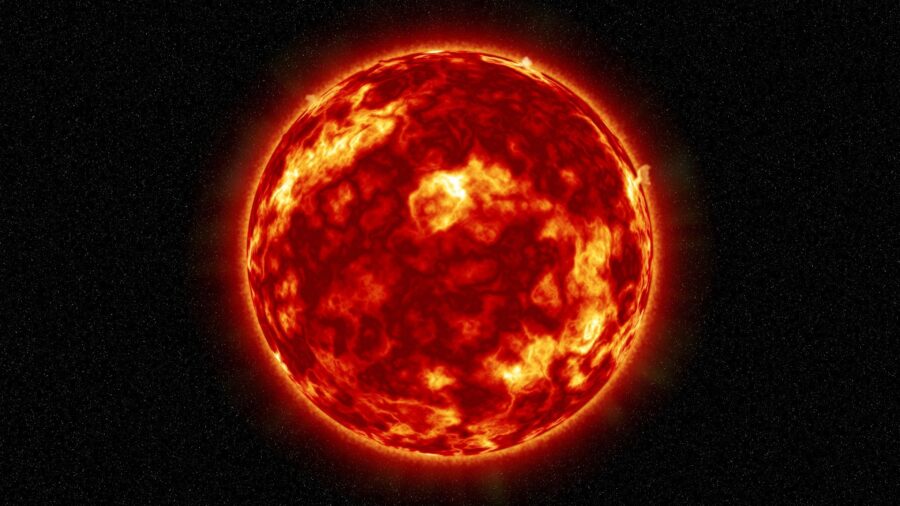Geomagnetic Storms On The Sun Are Increasing At Alarming Rate

A recent report by Science Alert explains a naturally occurring phenomena that happens on Earth when the sun reaches the peak of its 11-year cycle. Throughout the sun’s 11-year cycle, scientists can reasonably expect a somewhat predictable waxing and waning in the intensity of solar flares, depending on where we’re sitting within this cycle. But scientists are alarmed because although they anticipate to see peak solar activity in the form of flares by 2025, we’ve already exceeded the expected numbers, meaning that the sun is emitting more geomagnetic storms than we’re used to.
Scientists are concerned because the rate of geomagnetic storms coming from the Sun is increasing.
While the sun’s heightened activity often presents itself in the form of Aurora Borealis when a solar flare interacts with Earth’s magnetosphere at high altitudes, this increase in activity can also cause damage to radio frequencies, and in some cases, low-Earth orbit satellites (LEO). To say that we’re in imminent danger would be a gross exaggeration, but we do occasionally experience fallout as the result of the sun’s heightened activity.
One such notable instance that has been well-documented is referred to as the Starlink destruction event. This incident occurred when SpaceX launched dozens of satellites into orbit back in February 2022. Normally a low orbiting satellite wouldn’t be adversely affected by a burst of plasma from the sun, but in this case, 38 out of 49 satellites were damaged or lost after the initial launch.
In other words, even though the sun is capable destroying LEO satellites, it’s not likely that we’ll experience this kind of fallout closer to the Earth’s surface.
As terrifying as this incident sounds, there are a couple of factors to consider that will put your mind at ease. Typically speaking, LEOs are found at an altitude of 400 kilometers or higher. In the case of SpaceX’s Starlink satellites, they were simply in the wrong place at the wrong time while the sun had a coronal mass ejection, which caused a geomagnetic storm that increased the air density exponentially.

If the satellites were at a higher altitude, they would have been unaffected by the sun’s activity. But because they were only launched at an altitude of 210 kilometers, they were smack-dab in the middle of the solar event. What SpaceX experienced was an extremely unfortunate outlier when you consider the fact that there have been 35 successful Starlink launches in the past that were without issue.
What we need to worry about, however, is the fact that it’s more difficult to detect the many of the resulting storms because they very much depend on how the Earth’s magnetic fields will interact with the sun’s solar wind, which is much more difficult to detect.
In other words, even though the sun is capable destroying LEO satellites, it’s not likely that we’ll experience this kind of fallout closer to the Earth’s surface. To many spectators and star-gazers, the same solar activity that was responsible for the Starlink destruction event simply provides a fantastic light show in the form of the Aurora Borealis for those who live in the northern hemisphere.
But we’re not always in the clear. The sun has been known to mess with shortwave radio communications when its solar storms are particularly intense. Luckily, we’re able to detect solar flares when they leave the sun’s surface with a relatively high degree of accuracy.
What we need to worry about, however, is the fact that it’s more difficult to detect the many of the resulting storms because they very much depend on how the Earth’s magnetic fields will interact with the sun’s solar wind, which is much more difficult to detect.
Though the sun is currently boasting heightened activity within its cycle in the form of increased solar flares, there isn’t much to worry about at the present time. Just know that if you want to launch a low-Earth orbit satellite, you should probably consider the altitude.











